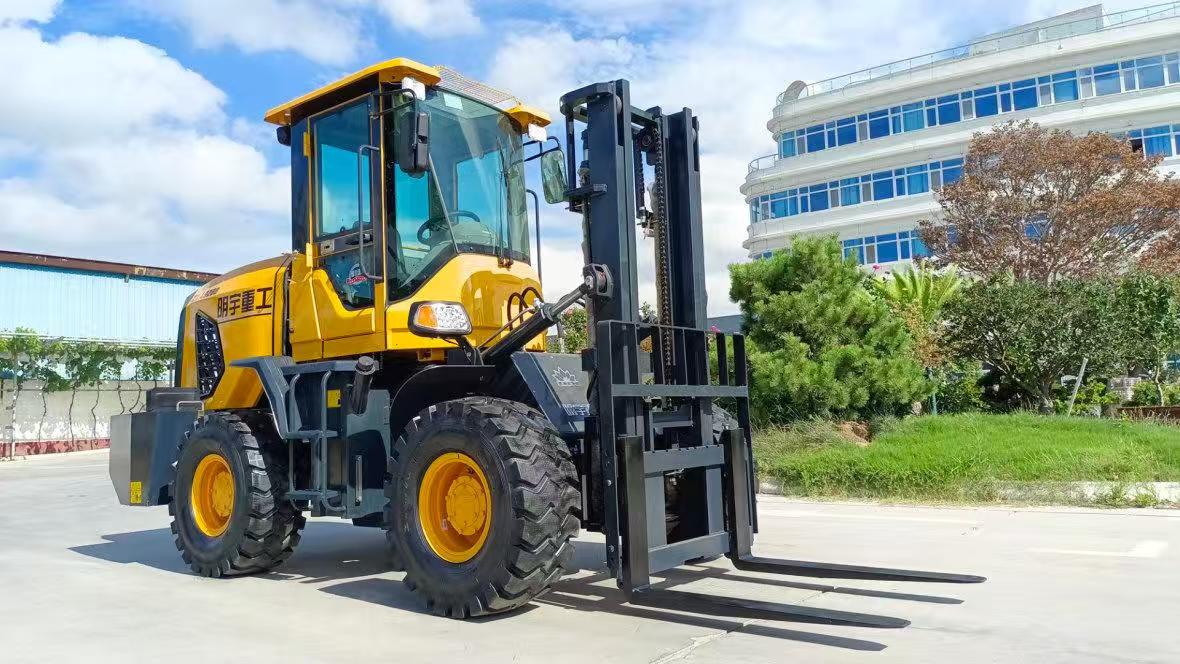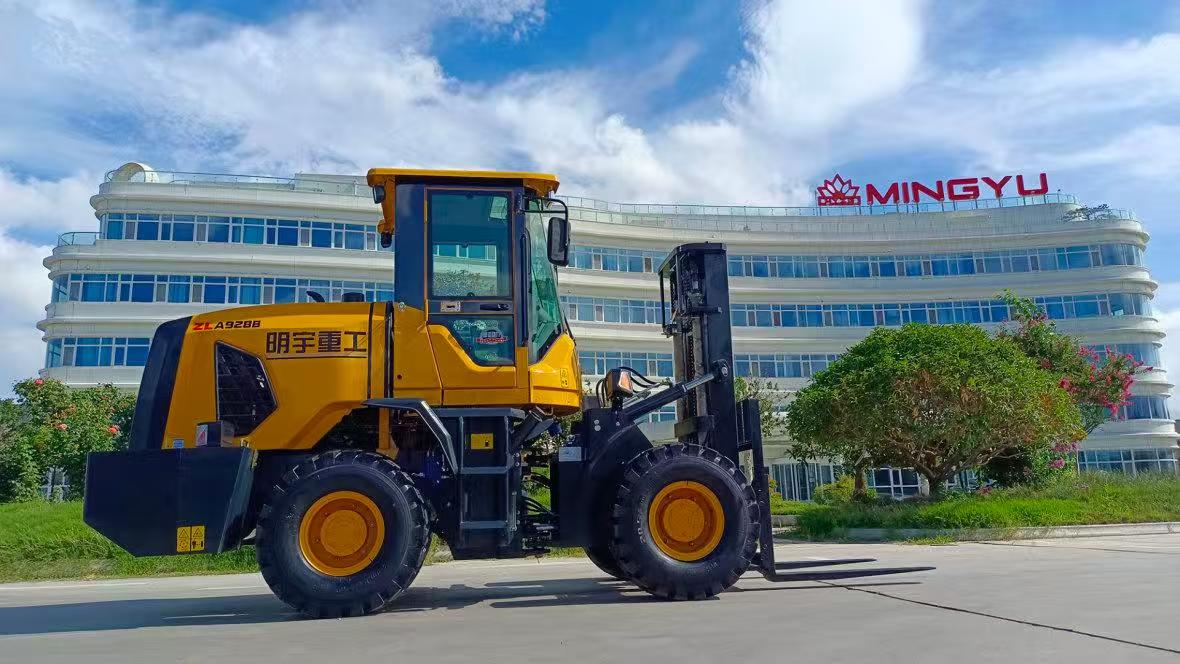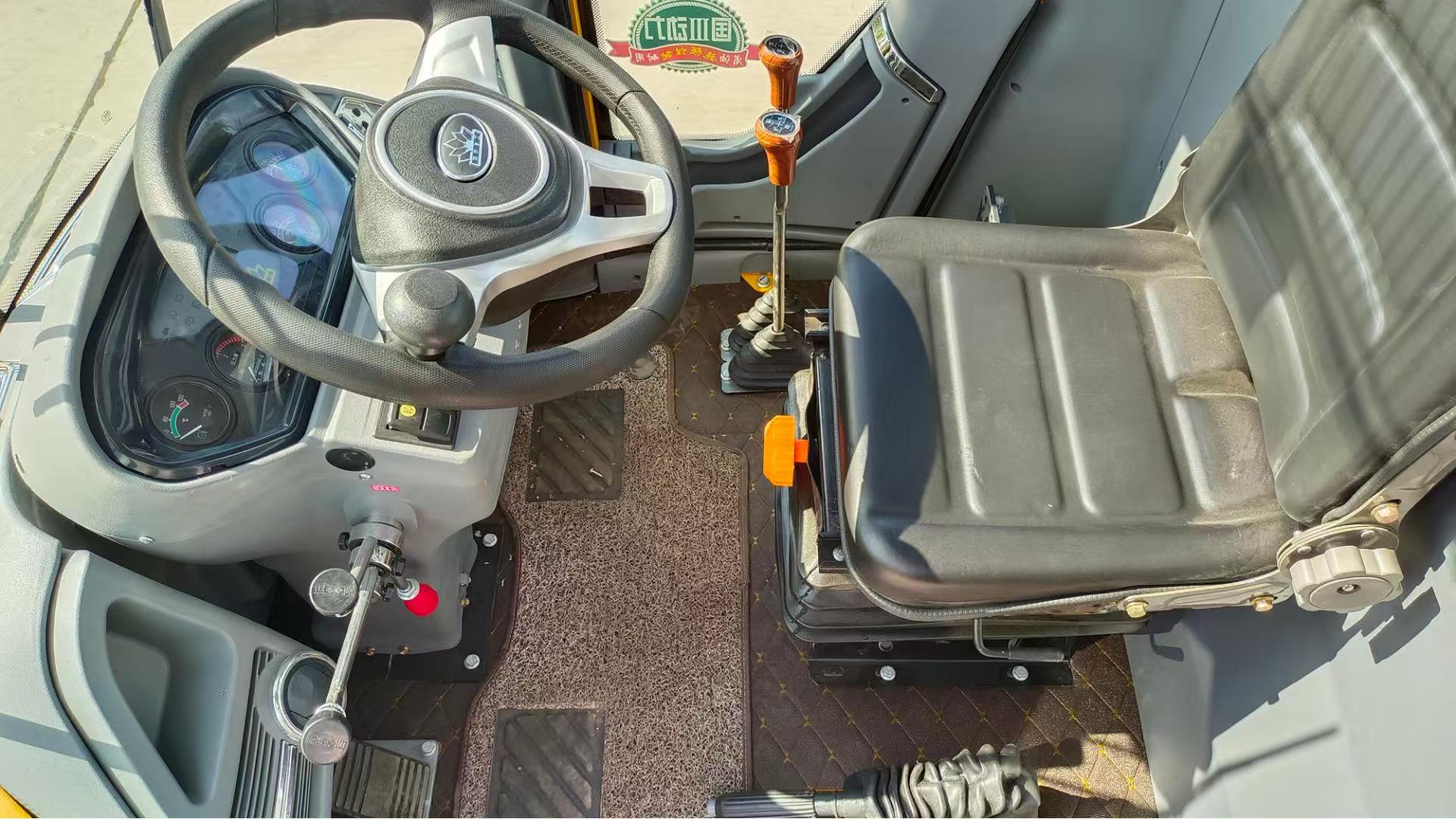How to Maintain a Rough Terrain Forklift
1. Introduction Rough terrain forklifts are vital machines used in construction sites, agriculture, logging, and other off-road environments. Designed to operate on uneven surfaces, these forklifts must endure harsh conditions like mud, gravel, slopes, and debris. Because of the rugged environments in which they function, regular maintenance is essential not just to ensure optimal performance, but also to prevent accidents and extend the machine’s lifespan.
Without proper care, rough terrain forklifts can quickly develop issues such as tire damage, hydraulic leaks, and engine strain. These problems can lead to costly downtime and potentially dangerous failures. This article provides a complete guide on how to maintain a rough terrain forklift—daily, weekly, seasonal, and annually—to ensure safety, reliability, and performance.
2. Understanding Rough Terrain Forklifts Rough terrain forklifts differ from standard forklifts in several key ways:
Design: They are built with high-clearance chassis, oversized tires, and powerful engines to handle tough landscapes.
Applications: Often used in outdoor settings such as farms, construction zones, or military logistics, where flat surfaces are rare.
Key Components: These include reinforced tires, robust suspension systems, hydraulic lifts, and sometimes four-wheel drive for enhanced traction.
Due to these design features and the challenging conditions they face, rough terrain forklifts require special attention during maintenance.
3. Daily Maintenance Checklist A daily inspection and maintenance routine is crucial for early problem detection. Here’s what operators should check every day:
Tires: Look for punctures, excessive wear, or improper inflation.
Forks and Mast: Ensure there are no cracks or bends, and confirm the mast operates smoothly.
Fluid Levels: Check oil, hydraulic fluid, coolant, and fuel.
Leaks: Examine under the machine for signs of leaking oil or fuel.
Brakes and Steering: Test responsiveness and listen for unusual sounds.
Warning Lights and Horn: Confirm all safety systems are functional.
Cleanliness: Remove mud, dust, and debris, especially around the engine and filters.
Operator Log: Record all findings and report any abnormalities.
4. Weekly and Monthly Maintenance Weekly and monthly checks allow for more detailed inspections:
Tire Pressure and Tread: Use a gauge to confirm tires are properly inflated and not too worn.
Battery: Inspect terminals for corrosion and ensure the battery is fully charged (especially important in electric or hybrid models).
Lubrication: Grease joints and moving parts like the mast, chains, and axles.
Hydraulic Hoses and Cylinders: Check for cracks, stiffness, or leaks.
Fasteners and Fittings: Tighten bolts, screws, and clamps that may have loosened from vibration.
Lights and Electrical Systems: Inspect all connections, wires, and switches.
5. Seasonal and Annual Maintenance As seasons change, your forklift faces different operating challenges. Annual maintenance is even more in-depth and often requires a certified technician.
Engine Maintenance: Replace oil, oil filter, fuel filter, and air filter.
Transmission and Differential: Inspect fluid condition and replace if contaminated.
Cooling System: Flush and refill coolant; inspect radiator and hoses for blockage or leaks.
Suspension System: Examine shocks, struts, and springs.
Lift Mechanism Calibration: Ensure lifting heights and tilts are accurate and balanced.
Full System Diagnostics: Use software tools to run engine and hydraulic diagnostics.
6. Common Wear Areas and Preventive Tips Certain parts of rough terrain forklifts wear out faster due to stress and exposure. Understanding these areas helps reduce breakdowns:
Tires: Regularly rotate if possible and avoid sharp objects that can puncture them.
Engine: Use high-quality oil and change filters often to protect against dust and debris.
Hydraulics: Always keep fluid levels within recommended limits and avoid overloading.
Air Intake System: Clean or replace filters frequently, especially in dusty environments.
Use OEM Parts: When replacing components, use original equipment manufacturer parts for compatibility and safety.
7. Creating a Maintenance Log and Schedule A structured maintenance schedule and record help ensure consistency and accountability.
Digital vs. Paper Logs: Use apps or spreadsheets to track service dates, parts replaced, and technician notes.
Schedule by Usage Hours: Base intervals on operating hours instead of calendar time for more accuracy.
Preventive Scheduling: Plan major inspections ahead of high-use seasons (e.g., summer construction).
Technician Involvement: Have qualified personnel perform or audit major maintenance steps.
8. Safety Considerations During Maintenance Maintenance involves potential hazards, so safety is non-negotiable:
Lockout/Tagout (LOTO): Always isolate power sources before servicing.
Personal Protective Equipment (PPE): Wear gloves, goggles, and protective footwear.
Work Area: Ensure it’s well-lit, clean, and free of unnecessary tools or materials.
Training: Make sure all personnel understand forklift maintenance procedures and safety standards.
9. Conclusion Rough terrain forklifts are engineered for demanding jobs, but without routine maintenance, their performance quickly degrades. By implementing a structured plan covering daily, weekly, seasonal, and annual checks, businesses can reduce downtime, improve safety, and extend equipment lifespan. Following manufacturer recommendations, keeping accurate maintenance logs, and prioritizing operator training are key to ensuring your rough terrain forklift performs reliably in every condition.
Post time:Jul.22.2025



